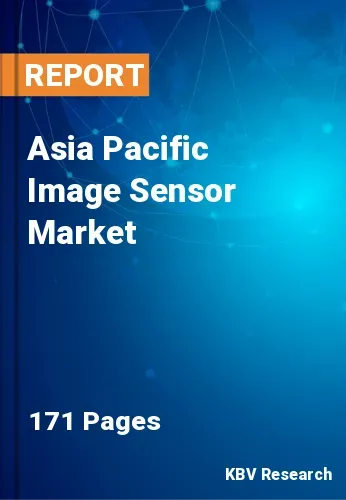The Asia Pacific Image Sensor Market would witness market growth of 12.6% CAGR during the forecast period (2023-2030). In the year 2021, the Asia Pacific market's volume surged to 2,00,073.5 thousand units, showcasing a growth of 16.4% (2019-2022).
There is an ongoing trend toward higher-resolution image sensors driven by the demand for sharper and more detailed images. This trend is prominent in smartphone cameras, digital cameras, and professional photography equipment. Integrating artificial intelligence (AI) and machine learning is a significant trend. These are used with AI algorithms for tasks like object recognition, scene analysis, and automated image enhancement. High Dynamic Range (HDR) imaging and computational photography techniques are increasingly used to capture and process images.
These technologies combine multiple exposures to produce images with enhanced dynamic range and improved image quality. In medical imaging, these assist in diagnosing conditions, from detecting fractures in X-rays to visualizing internal organs through MRI and CT scans. They play a crucial role in non-invasive diagnostics. These inspect products on production lines, ensuring they meet quality standards. They can identify defects, measure dimensions, and track product consistency. Surveillance cameras use these to record images in various settings, including public spaces, homes, and businesses.
According to the India Brand Equity Foundation, India is one of the greatest sectors for consumer electronics in the Asia-Pacific region. It is home to a substantial talent for electronic and embedded software design. India has committed to attain US$ 300 billion in electronics manufacturing and US$ 120 billion in exports by 2025-26. In 2022, smartphone shipments from India reached 190 million units. The smartphone industry in India is among the largest in the globe. The Indian gaming industry has been growing, leading to increased use of these in gaming peripherals and consoles. All these factors will uplift the regional market’s expansion in coming years.
The China market dominated the Asia Pacific Image Sensor Market, By Country in 2022, and would continue to be a dominant market till 2030; thereby, achieving a market value of $7,314.4 million by 2030. The Japan market is registering a CAGR of 11.9% during (2023 - 2030). Additionally, The India market would showcase a CAGR of 13.3% during (2023 - 2030).
Based on Type, the market is segmented into CMOS (Front Side Illuminated (FSI), and Back Side Illuminated (BSI)), and CCD. Based on Vertical, the market is segmented into Consumer Electronics, Automotive, Defense & Aerospace, Industrial, Medical, Security & Surveillance, and Others. Based on countries, the market is segmented into China, Japan, India, South Korea, Singapore, Malaysia, and Rest of Asia Pacific.
Free Valuable Insights: The Global Image Sensor Market is Predict to reach $64.3 Billion by 2030, at a CAGR of 12.2%
The market research report covers the analysis of key stake holders of the market. Key companies profiled in the report include Sony Corporation, Samsung Electronics Co., Ltd. (Samsung Group), OmniVision Technologies, Inc., STMicroelectronics N.V., ON Semiconductor Corporation, Panasonic Holdings Corporation, Canon, Inc., GalaxyCore Shanghai Limited Corporation, PixArt Imaging, Inc., and Toshiba Corporation.
By Type (Volume, Thousand Units, USD Billion, 2019 to 2030)
By Vertical (Volume, Thousand Units, USD Billion, 2019 to 2030)
By Country (Volume, Thousand Units, USD Billion, 2019 to 2030)

Our team of dedicated experts can provide you with attractive expansion opportunities for your business.

